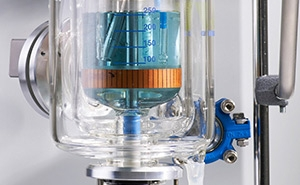Reproducible Research in Academic Labs
Solving the Replication Crisis with Automated Synthesis Workstations
Chemical experiment reproducibility is one of the biggest challenges in academic research labs. According to a 2016 survey of over 1,500 scientists, 70% had tried and failed to reproduce another scientist's experiments, and more than 50% could not replicate their own experiments [1].
Many researchers have discovered that EasyMax™ automated synthesis workstations can solve these reproducibility challenges. They have implemented it in their labs to achieve precise control, complete data capture, and simplified, intuitive operation for all users.
Register for the 30-minute live webinar to see a hands-on demonstration of how you can improve reproducibility in your lab with automated synthesis workstations, and learn how EasyMax can provide:
- Reproducibility – the same experiment can be run with 100% reproducibility regardless of who conducts the experiment
- Data Capture – all data is captured and stored every 2 seconds, leaving no room for misinterpretation
- Personal Safety – automation of chemistry removes exposure to dangerous chemicals or conditions
- Creativity – removing the need to perform manual tedious tasks frees up time to imagine new innovative solutions
Testimonials

Juan Pablo Gevaudan Burgos, Ph.D.
Assistant Professor, Penn State University
"Obviously, replicability is one of our first and foremost reasons of why we use the EasyMax. We can increase yield, and the replicability is fantastic, and we can actually have a lot of control on the processing parameters."

Jason Hein
Associate Professor, University of British Columbia
"The experiments you choose to do are based on success and what you think you can achieve. If you didn't have to worry about this kind of lower level [replicability] stuff, you're free or just dream about what might work."

Nick Smith
Director, Yale Catalysis and Separations Core
“I think there are two significant benefits to automated reactors: productivity and reproducibility. Automated reactors inherently increase productivity. Whether it is being able to screen 10 reactions at a time at -20 °C or allowing for reactions to be started, run, and quenched without direct user input, productivity should increase. So we get more data. But not only do we get more data, we get better data, because the small things that researchers often fail to record, such as exact timing of reagent additions, exact temperatures, stirring rates of heterogeneous reactions, etc. get recorded and can be reproduced where otherwise they often would be ignored.”
Citations
- Baker, M. (2016). 1,500 scientists lift the lid on reproducibility. Nature, 533(7604), 452–454. https://doi.org/10.1038/533452a
- Cooper, M. M. (2018). The Replication Crisis and Chemistry Education research. Journal of Chemical Education, 95(1), 1–2. https://doi.org/10.1021/acs.jchemed.7b00907

